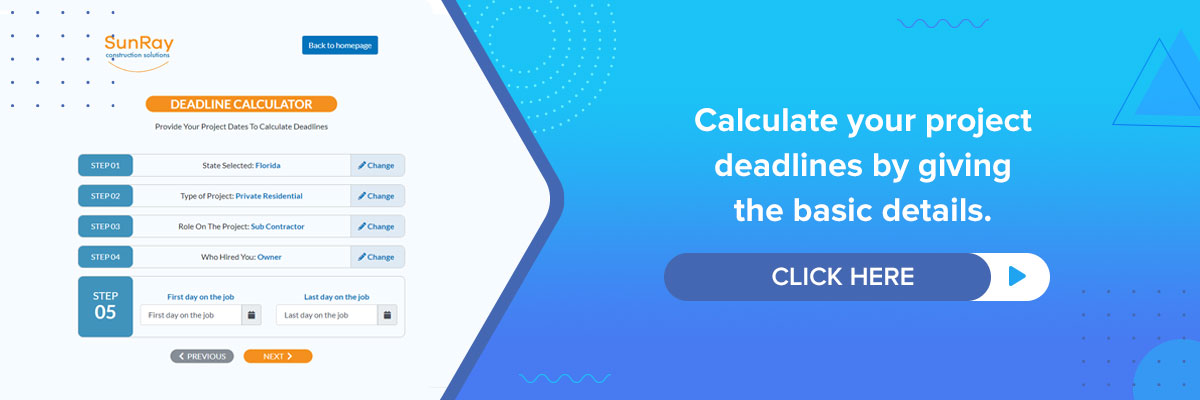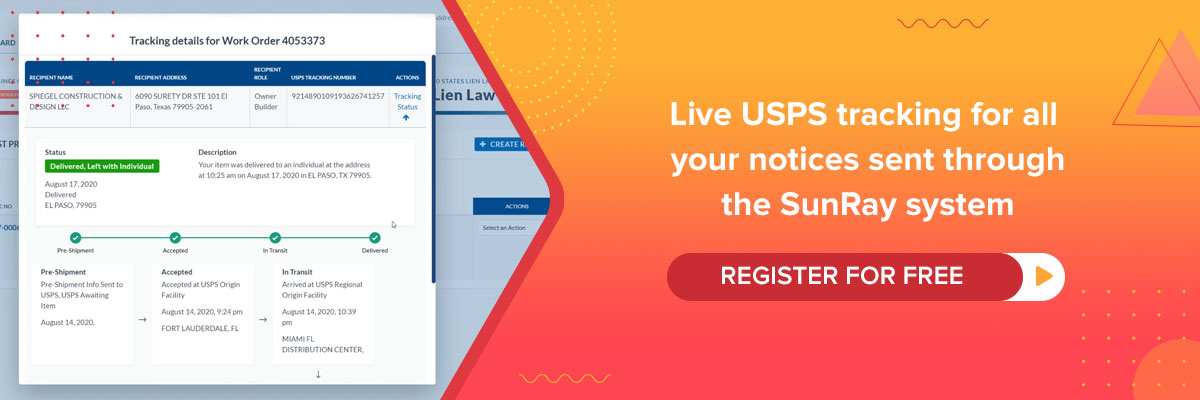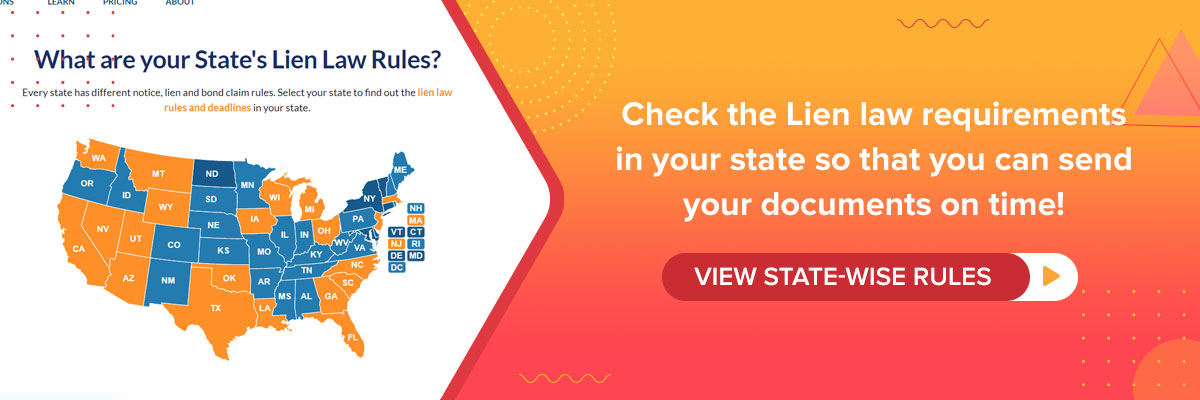How to Get Paid After Sending a Notice of Nonpayment - Webinar
You sent your Notice of Nonpayment, but when will you get paid? You may need to send a proof of claim, file suit on the payment bond, or submit your claim to a construction lawyer.
Last updated:
Nov
24
,
2025
Published:
Dec 15, 2020
10 Mins
Read
Educate yourself on bond claim deadlines, when to send your NTO and Notice of Nonpayment, when to file suit on a payment bond, what to do as a subcontractor after sending a Notice of Nonpayment, whether you should send a Proof of Claim, when you will get paid, and when to submit a claim to a construction lawyer.
This blog comes from a webinar that was presented by SunRay Construction Solutions and Alex Barthet. Alex is a board-certified construction lawyer who serves clients in Florida. In this blog we will discuss how to get paid after sending a Notice of Nonpayment.
What Are the Bond Claim Deadlines?
First, we will talk about the bond claim deadlines that you need to be aware of. We will break this down in two parts: private project and state public projects.
Dive deeper: How Do I Get Paid on a Public Project If There Is No Bond?
For private projects
The general rule is that if you have a direct contract with the bonded prime contractor – which means that you are a subcontractor on the job – then you do not need to send a Notice to Owner or Notice to Contractor.
But you should. You should have a process in your office where your office sends Notices to Owner and Notices to Contractor automatically on every job that you open over a certain amount of money like $500 or $25,000.

But, if you are working for a bonded prime contractor on a private job, you do not need to send a first notice or Preliminary Notice.
1. Send your Notice of Nonpayment
You need to send your Notice of Nonpayment within 90 days of your last day of work or delivery of materials. The 90 days is a hard and fast deadline. You have to count every weekday, weekend, and holiday from the last day of work to the end.
This applies until the 90th day when it is going to roll over to the next business day. For example, if the 90th day is a Saturday, it rolls over to Sunday, which then rolls to Monday. If Monday is a federal holiday, then it will roll over to Tuesday.
Just know that the surety needs to receive a copy of the Notice of Nonpayment by the 90th day. So, if you mail it on the 90th day, you are too late. You need to send it much earlier so that it is received by the 90th day.
2. File suit on the bond
The last requirement is that you have to file suit on the payment bond within one year from your last work on the job, or the last delivery of materials from your material supplier.
These are the timeframes you need to be aware of for a private bonded job, if you have a direct contract with the bonded contractor. But if you do not have one, meaning that you are a sub-subcontractor or a material supplier to a subcontractor, then you need to send that first notice which is the Notice to Owner or Notice to Contractor.
Know more: I've Received a Claim on my Payment or Performance Bond! Now What?
3. Send Notice to Owner/Notice to Contractor
The Notice to Owner or Notice to Contractor needs to be received no later than 45 days from your first work or delivery of materials on the job site. Again, the 45 days is counted the same way as the previously mentioned 90-Day count. You count every weekday, weekend, and holiday up to the 45th day. On this day you need to roll over to the next business day if it falls on a Saturday, Sunday, or legal holiday.

4. Check for subcontractor bonds
Most people do not know this, and it is not recorded in the public record, but you can get a copy. For example, you are a sub-subcontractor, and you are working for the subcontractor. That subcontractor may have their own bond that you can make a claim against in addition to the claim that you can make against the prime contractor’s bond.
For example, let us say there is a sub-subcontractor on a job, and they do not send the necessary notices. They miss their deadlines to make a claim on the prime contractor’s bond, but they find a bond by the subcontractor. They can make a claim against that bond and the timeframes for the sub-bond are not controlled by these rules. It is controlled by whatever it says in the bond. So, in the case of the bond from the subcontractor, he still has rights and can make a claim.
The best place to ask for a copy of that subcontractor bond is from the prime contractor. The prime contractor is more likely to give you a copy of the sub-bond than the subcontractor who you have a contract with. Now you can send that request in writing and they are supposed to give you a copy of any sub-bond.
State Public Bonded Projects
The general rule for state public bonded projects is if you have a direct contract with the bonded prime contractor – which means that you are a subcontractor on a bonded public job – you do not need to send a Notice to Owner or Notice to Contractor. Again, you should have a process in your office, but no matter what job you start, if it is above a certain amount of money, those jobs should automatically be noticed.
1. Notice to Owner/Contractor is not required, but it should be sent
In case you missed it, or if something falls through the cracks, that on state public bonded jobs, if you are in direct contract with the bonded contractor, you do not need to send your first notice. Most people are not aware of this next fact, but you actually do not need to send your notice. There is no Notice of Nonpayment required for subcontractors on a public job that is bonded.
You should still send it within 90 days because that should be the process in your office. But just note that if you are a subcontractor on a bonded job, you do not need the first notice or the second one.
2. File suit on the bond
You need to file suit within one year from your last work or delivery of materials to the job. This rule does not change.
3. Check for subcontractor bonds
Check for any subcontractor bonds.
Now if you are working on a state public bonded job and you are not in contract with the bonded prime contractor – which means that you are a sub-subcontractor or a material supplier to a subcontractor, you need all the notices that were mentioned above.
You need that Notice to Owner/Notice to Contractor within 45 days of your first work. You need the Notice of Nonpayment delivered no later than 90 days from your last work, and you need to file your lawsuit on the bond no later than one year from your last work or delivery of materials on the project. Again, as we mentioned for private jobs, your subcontractor who you have a direct contract; they may be bonded too.

So if you have lost your right to get paid on the bond issued by the prime contractor, because maybe someone messed up or forgot to send one of the notices, look for that bond from the subcontractor because you may have rights on it.
I Sent My Notice of Nonpayment to the Surety. What is Next?
Now we will talk about what happens when you send your Notice of Nonpayment to the surety. We will discuss what is it that they do with this document and how you can use it to get paid.
1. The Notice of Nonpayment only starts the process
The first thing you have to understand is that the Notice of Nonpayment only starts the claim process. It is just the first step, and hence not the only document you need to send to get paid.
2. Claimants receive a letter asking for “Proof of Claim”
Once you submit the document you will typically receive in response, a letter from the surety thanking you for your claim, saying that they will investigate it for you, and that they will check their principal, but that they also need more information from you. So, they will request backup documentation and a Proof of Claim.
3. No obligation in Florida to provide a POC
In the state of Florida, there is no obligation to provide that Proof of Claim form. The reason why you do not need to send the Proof of Claim is because most sureties are using this sworn document for you to swear how much you are owed, when you were on the job, the materials and labor you provided, when your first day was, and when your last day off was.
4. In most instances, do not provide a POC
This documentation is not used to support your claim, but to find reasons why they should deny your claim. So, in many instances it is advised not to provide the Proof of Claim form. There is nothing wrong with sending it, but in most instances, it is not a way to advance a claim process.
5. Most sureties will not pay you voluntarily
Suretyship is not insurance. When you get in a car accident and you have insurance, you pay your premium every month, and you submit it to your insurance company. Maybe it is a total loss, or they write you a check for $30,000 to fix your car. The next month your premium does not go up $30,000, it may just go up a little bit. But it is not a dollar-for-dollar reimbursement from the claim that you submitted.
Suretyship works as an indemnity, meaning that the surety underwrites for no loses. So, when they have to write a check on behalf of their principal, they are going to the principal to get it all back. In most instances, a surety will not voluntarily pay you money unless the principal or bonded contractor agrees to pay you first.
Now if they had agreed to pay you in the first place, you would not have submitted the claim to begin with. The surety is not going to write a check that they do not think they can get back. Your claim is not being analyzed for them to realize that they owe you money and cut you a check. This is not the process they undertake.
6. Watch out for a shortening of your claim period
Watch out for any document you may receive that would shorten the period of time you have to file suit. You have one year from your last date of work to file a lawsuit on the bond. There are procedural mechanisms that are permitted by the contractor or the owner to shorten that time.
And if you get a document called a Notice of Contest, then they can shorten the period of time that you have to file a lawsuit. So, keep an eye out for any document that seems to shorten the period of time you have to file suit.
7. Watch out for the surety waiting you out
The other thing you need to watch out for is a surety just waiting you out. Above, we discussed that you have one year to file a lawsuit.
For example, there is a subcontractor who submitted a claim and provided the backup. He would check every couple of months with the surety and ask what was happening and when he would get paid. The surety would send letters saying that they were still investigating and talking to the owner.
From the time the subcontractor was last on the job till about 13 months, which is more than a year later, this had been going on. Then he receives a letter from the surety that says his claim was denied because the time had expired. The surety was just waiting out the claimant to avoid paying.
So, know that if you are going to go through the claim process and you are going to entertain the requests of the surety, that the deadline you need to watch out for is by the tenth month of your last day of work. Again, you should not be waiting that long though. But if you have made no meaningful progress to get paid on a job by the surety, you need to start considering filing a lawsuit to pursue your claim.

Protect Your Rights with a Notice to Owner
Sending a notice to owner is the first step to secure payment on construction projects. Learn how a notice to owner Florida helps protect your lien rights and ensures you get paid.
When Will I Get Paid?
It is suggested that you practice what is called the 60/60 rule. This means that 60 days from your last work on the job, is when you need to start preparing your Notice of Nonpayment. You should not be waiting until the 87th day, because it takes time to be prepared and get delivered. So, at about Day 60 is when you should start the Notice of Nonpayment process.
Once you submit the Notice of Nonpayment, then you should undertake your own debt collection strategies to get paid for the next 60 days.
1. Hassle your customer and surety for payment
You should be hassling your customer and calling the surety for payment. You should also be sending emails and letters. Make sure you really shake that tree on behalf of both your customer and the surety. Do not let them go. The more aggressive you are at being a pain to get paid, the more likely you are to get paid before other people.
2. Submit your claim to a construction lawyer
If you try hassling and it still does not work, then submit your information to a construction lawyer to pursue the collection process through a lawsuit. With a claim on a bond, you can file a single count claim against the bonding company. So, if you are a bonded contractor and there is a surety, you just sue the surety. It is one count, and you can turn it around in a day or two.
They get 20 days to respond after they are served, and unless they have a good defense, more often than not, they come back and want to make it go away. The reason this happens is because when you submit your Notice of Nonpayment when you call them or send an email, they can delay and ignore you. There is no backstop to continued delay.
However, when you sue someone, if they do not respond and assert their defenses within 20 days of being served, you automatically win, and they lose. So, the delay game comes to a quick end once you file the lawsuit. And in most of these cases, the surety, through the principal, typically negotiates and the claim is settled. In many cases, even legal fees and interests are reimbursed, and the principal balance is received.
It is more often than not a very fast process. The surety will then realize they cannot wait any longer and they will get it resolved so that they do not have to keep spending money in legal fees.
3. Except for business reasons, don’t delay
The only reason you would want to want to delay this process until the end of the time period when you have to file suit is if you have some business reason or business relationship to wait on.

Sunray Construction Solutions offers professional "Notice to Owner Florida" services to help you secure your mechanics lien florida rights in the construction industry. Looking for a free Notice to Owner form in Florida? Get your free, editable "Florida Notice to Owner Template" today for easy and accurate preparation.












